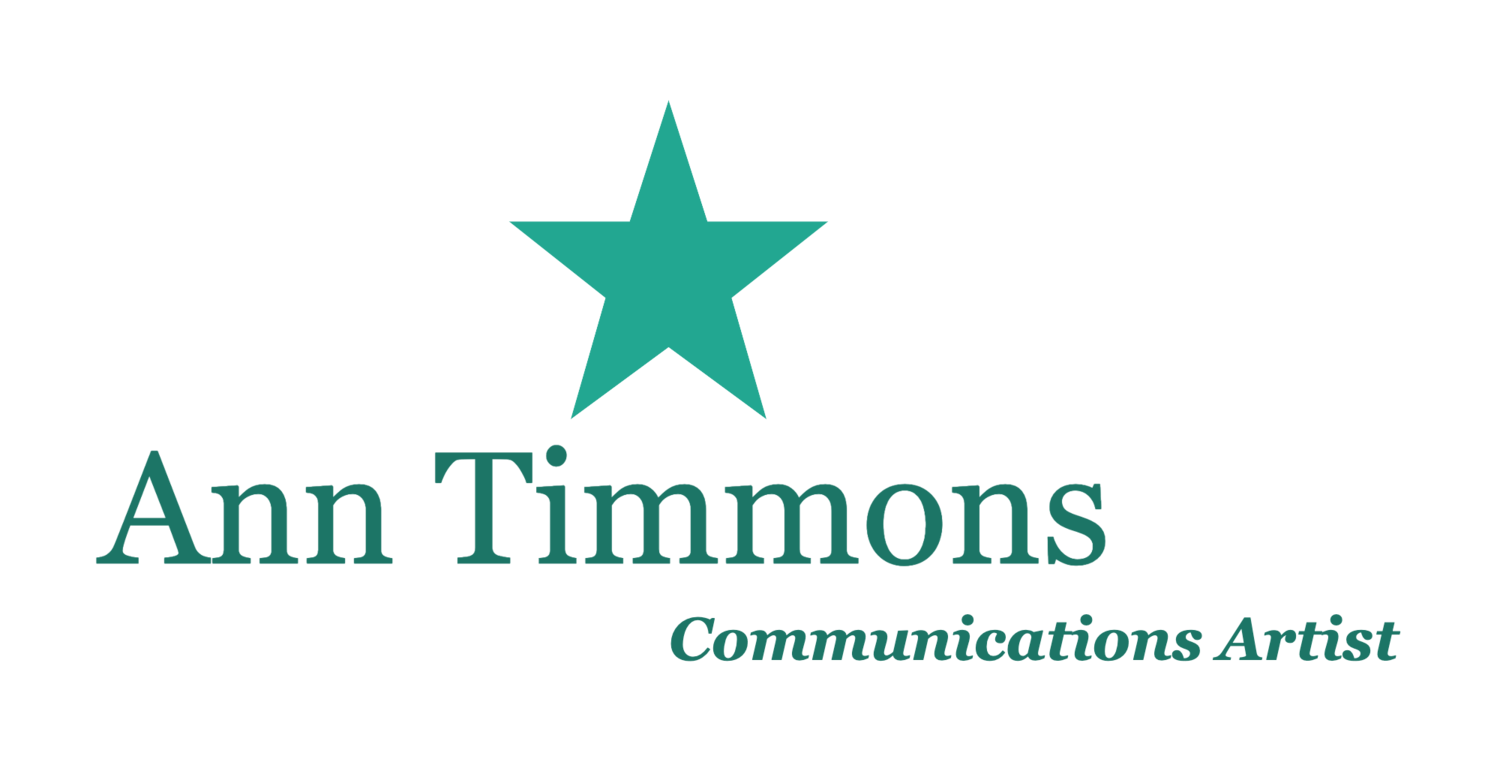Barbara Coward of Enrollment Strategies posted the following blog on her site March 1, 2014:
Barbara has asked me to guest-blog this month, so let me just start by introducing myself. My name is Ann Timmons, Communications Artist. I help clients communicate with powerful clarity. My approach is informed by my background in the professional theatre. It is hands-on and practical, meeting clients where they are, speaking-wise, and giving them the tools they need to discover–and embrace–their Authentic Presence.
There are many traps speakers can fall into when they present a lot of information. The primary trap, however, is not that the speaker will bore the audience, but that the speaker is afraid she/he will bore the audience. When you begin a speech already worried that you will bore your listeners, rest assured, you will! So how do you fix that? Let’s examine why you think your speech will fail to engage your listeners. Often it is because what you are saying bores you. It is information you have given time and time again, and so you feel you are droning on and on with the same old, same old. If that is your attitude, you’re speech is guaranteed to bore the audience. The good news is—you can fix it!
First of all, you need to go back to content organization and ask yourself: is this really the best way to organize my material? And does each point follow the other? If you don’t create an outline when you initially write your presentation (and I mean an old-fashioned outline with Roman numerals, not bullet points), go back and “reverse outline” to make sure the structure fits into outline form. Do not venture beyond the sub point level of detail. And throw out anything that does not fit the outline; it will distract listeners from your main points. When you veer off onto tangents that do not reinforce your thesis, you lose your audience. Novelists refer to this as “killing your little darlings.” Sometimes it hurts, but it is necessary to keep your audience focused.
Limit your number of main points to three, possibly four (if you must). Likewise each main point should have no more than three sub points. Much research has shown that the human brain cannot process more than this at one time. Especially in small type on a PowerPoint slide! If you have seven main points figure out how to group them so you have fewer. Nothing bores an audience like interminable lists.
Next, remember that even when delivering information, you are telling a story. So keep narrative structure in mind. Luckily, the beginning-middle-end formula for every story ever told fits nicely with the introduction-main points-conclusion format of a speech. Look for stories to use as examples for reinforcing or illustrating your main points. If you can find one great story (a story of individual triumph over adversity, for example) that can be the overarching illustration for your speech, use it. But you don’t have to wrack your brain for that one. Using a different story to illustrate each of your points will work quite well. Be specific. And since story-telling is an aural art form, you need to adhere to its rules. Use active verbs in short sentences.
So I would say content-wise, judicious use of story will help you avoid falling into the boredom trap. As for delivery, the wonderful thing about using stories is that telling them makes your delivery more connectional. You will be talking to people, not at them, creating relationship with the audience members by sharing stories. Connecting through story, after all, is how humans have built community though the ages.
It’s not a magic bullet, but if you focus on the story you are telling (not just the examples you use to illustrate your points, but the larger story of why you are speaking in the first place) you will engage your audience. And positioning yourself as a storyteller who has something vital to share establishes connection. That sense of shared humanity will pay off long after you have stepped away from the podium.

